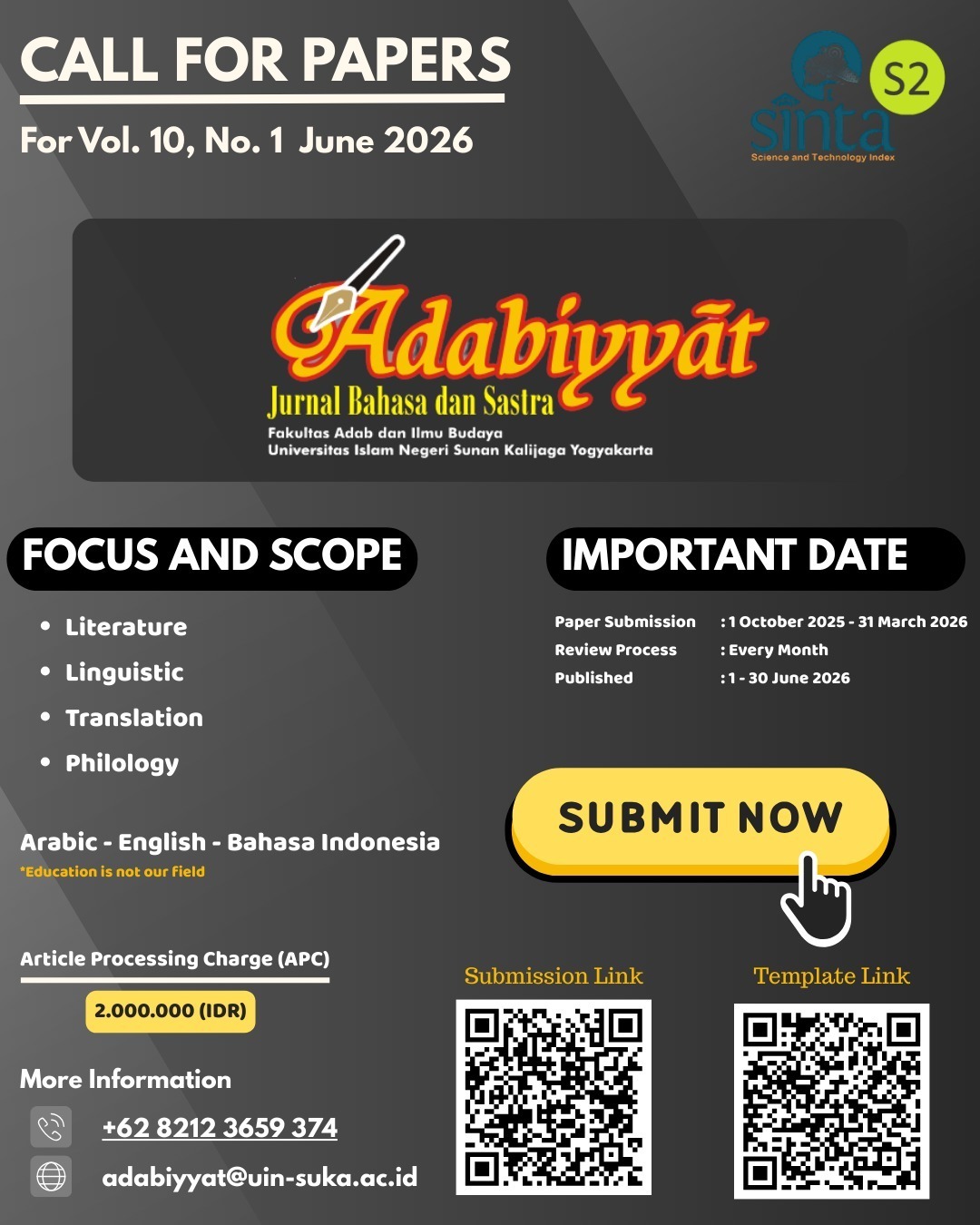KASUS ANALISIS KONTRASTIF BAHASA INDONESIA DAN BAHASA ARAB SERTA IMPLIKASINYA DALAM PENGAJARAN BAHASA (Analisis Deskriptif Metodologis)
DOI:
https://doi.org/10.14421/ajbs.2013.12108Abstract
The term "contrastive analysis" (CA) can be defined as how to compare two or more languages in synchronic not diachronic analysis including phonetic elements, morphemic, syntactic, and discourse for the sake of teaching and translation discourse. CA purpose is to look for similarities and differences between two or more languages as the object of study. Benefit from the findings of CA can be used as one of the basic considerations in developing language teaching syllabus and in selecting appropriate translation pattern. This practical method of analysis of language has experienced the ups and downs from time to time which in turn gave birth to two powerful streams (strong version) and weak (weak version). Nevertheless, CA is still needed in the world of foreign language teaching does not turn a blind eye to the weaknesses and strengths. Basically there is no single approach that perfect language, so the use of comprehensive methods are a good choice can therefore complement each other. Implications of CA will give influence to teachers, subject matter, and syllabus. Through this analysis, a language teacher can display methods, materials and cargo with special and specific ways. While, the subject matter may be submitted with varying intensity through the CA of the findings of aspects of equality and difference. Syllabus based CA can determine the design of the learning and acquisition targets with existing time allocation.
Downloads
References
Al-Ghilayain, Mustafa. 1987, Jāmi’ al-Durūs al-‘Arabiyyah, Libanon: al Maktabah al ‘Asriyyah
Al-Jurri, Khalīl, 1993. al-Mu’jam al-‘Arabi al-Hadīs, Paris: Laros.
Dahdah Antoine. 1981. A Dictionary of Arabic Grammar In Charts And Tables. Bairut: Libanon.
Hymes, Del. 1972a. “On Communicative Competence”. Dalam J. P. Pride & J. Holmes (eds.). Sociolinguistics, Hammondsworth: Penguin.
Ibrāhīm, ‘Abd al ‘Alīm. 1969. Al-Nahw al-Tatbīqī. Cairo: Dār al Ma’ārif.
James, Carl. 1980. Contrastive Linguistics. Harlow, Essex: Longman.
Keraf. Gorys. 1991. Tata Bahasa Rujukan Bahasa Indonesia. Jakarta: Grasindo.
Klein, W. 1986. Second Language Acquisition, Cambridge: Cambridge University Press.
Kridalaksana, Harimurti. 1994. Kamus Besar Bahasa Indonesia. Jakarta: Balai Pustaka.
Kridalaksana, Harimurti. 1993. Kamus Linguistik. Jakarta: Gramedia.
Mackley. 1999. Analisis Bahasa (terj. Abd. Syukur Ibrahim). Surabaya. Usaha Nasional.
Mahmūd, Mohammad Bin Zaen Bin. 2004. Al-Fasā’il al-Nahwiyyah fi al-Lugah al-‘Arabiyyah wa al-Malāyawiyyah. Cairo: Maktabah al-Adāb.
Mu’in, Abdul. 2004. Analisis Kontrastif Bahasa Arab dan Indonesia – Telaah terhadap Fonetik dan Morfologi. Jakarta: Pustaka al-Husna Baru.
Nababan, Sri Utari Subyakto. 1993. Metodologi Pengajaran Bahasa. Jakarta: Gramedia.
Sheen, R. 1996. Keuntungan dari Pemanfaatan Analisis Kontrastif dalam Proses Belajar Mengajar Bahasa Asing. IRAL: Ulasan Internasional Linguistik Terapan dalam Pengajaran Bahasa. Dalam www. Kemunduran AK, diakses tanggal 10 Oktober 2012.
Sudarno. 1990. Kata Serapan dari Bahasa Arab. Jakarta. Arka Media Cipta.
Ya’qūb, Emīl Badī’. 1994. Mausū’ah al-Naḥw wa al-Ṡarf wa al-I’rāb. Libanon: Dār al ‘Ilm Li al-Malāyīn.
Downloads
Published
Issue
Section
License
- Adabiyyāt: Jurnal Bahasa dan Sastra publishes all articles entirely in full text.
- It is permissible for readers to download and to use it for scientific purposes and scientific dissemination.
- The author can re-publish the article that has been published by the Adabiyyāt: Jurnal Bahasa dan Sastra after obtaining written permission from the editor. This letter can be obtained by submitting a request letter for permission to republish the article to Adabiyyāt: Jurnal Bahasa dan Sastra via email adabiyyat@uin-suka.ac.id. In the second publication, the author is required to include information that the article was firstly published by the Adabiyyāt: Jurnal Bahasa dan Sastra.









